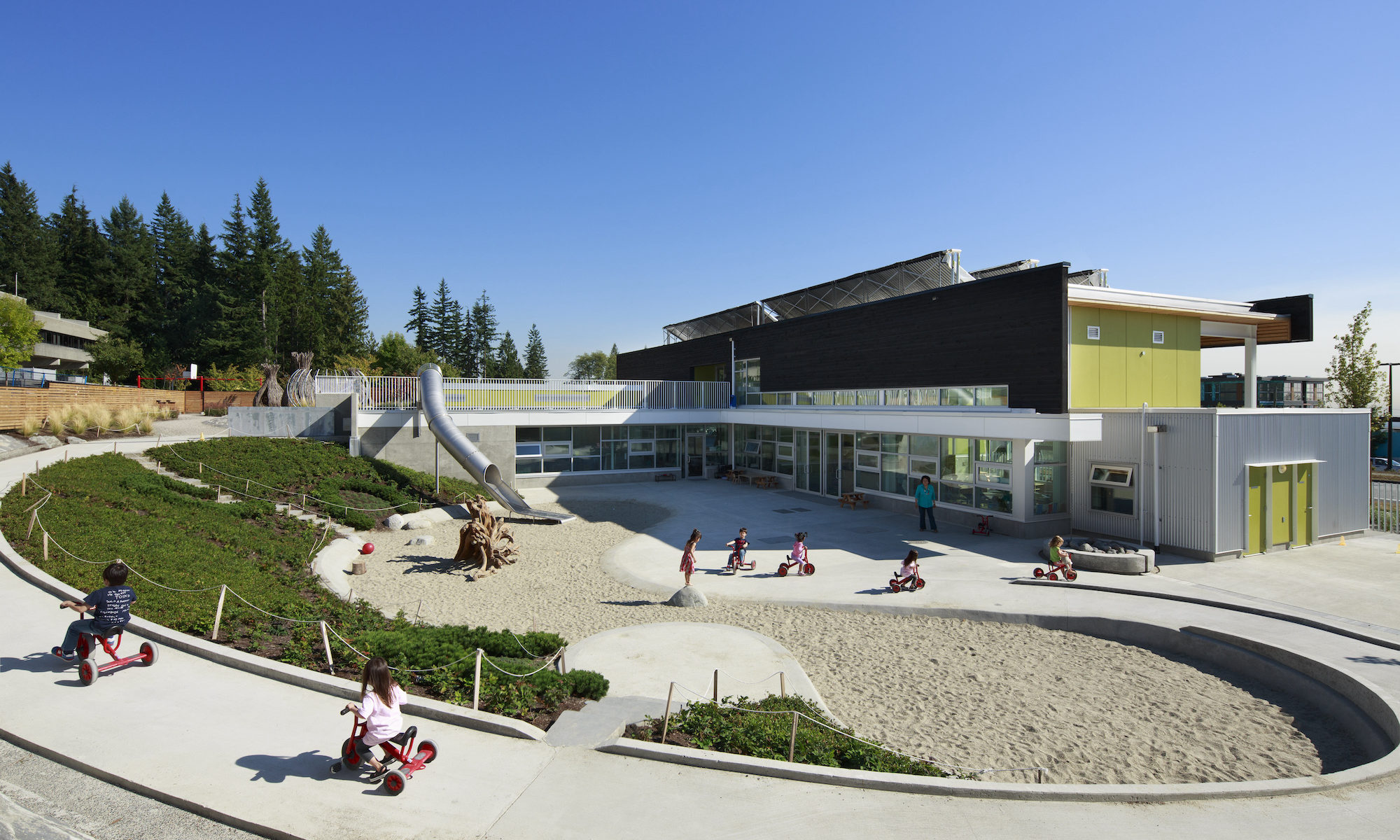The UniverCity Childcare Centre at Simon Fraser University (SFU) was the first childcare centre in the world to obtain the Living Building Challenge (LBC) standard. It was an early adopter of the LBC standard, which originated in British Columbia. The Centre is linked to the SFU Faculty of Education for research on the provision of innovative childcare. After the building was completed and in operation, university researchers engaged with staff at the Childcare Centre in a community of practice model to study and inform the use of the building itself as part of the children’s ‘play-based holistic learning’ about sustainability.(1)
The design process was informed by sustainable building practices and the Childcare Centre’s adoption of the Reggio Emilia pedagogical three ‘teachers’ model whereby educators are considered to be the more than teaching staff, but also the environment in which the children learn and the community in which they live. Inclusive design processes helped the project team understand how children and staff wanted to use the space to support education and development.
This project is featured as one of our healthy urban development case studies.
| Location | Burnaby, British Columbia, Canada |
| Project type: | Education, Childcare |
| Size: | 530 m2 (building), 2,009 m2 (site) |
| Goals: | Integration of sustainable and holistic teaching approach in building design. |
| Date started: | 2010 |
| Date completed: | 2012 |
| Project cost: | USD 3.2 million |
| Website: | https://univercity.ca/the-community/childcare-education/ |
| Stakeholders: | Architect and Interior Design: Hughes Condon Marler Architects, Structural Engineer: Fast + Epp, General Contractor: Ledcor, Project Owner: Simon Fraser University (SFU) Community Trust |
Health and wellbeing
The building was directly integrated into the Childcare Centre’s pedagogical approach, making it a striking example of promoting health through education, particularly about environmental sustainability, among young children. An early childhood education expert involved in the project, Margaret MacDonald, explained the importance of sustainable thinking for children:
‘Over the past several years, the international community has been developing global goals to promote human rights, equality, and security through 2030. These Sustainable Development Goals are designed to create conditions in which every person on earth is able to thrive in societies that are safe, progressive, nurturing, just, and peaceful. Children and their families will have a vital role to play in creating these societies and will need a strong foundation in sustainable thinking and practices to bring about a brighter future’ (1).
Children at the UniverCity Childcare Centre are supported to learn about sustainability within the building and playground, the garden, the forest and the recycling station. MacDonald details the capacities that children can gain through this experiential and holistic learning within the innovative building and its grounds. Two examples are highlighted from her work showing how children’s capacities to deepen understanding can be supported (1):
1. Learning about living systems ‘leads to a better understanding of the impact of our actions and can lead to better care of our resources.’ The building’s ‘heating and waste water systems at UCC are living systems’ and children can learn more about these by ‘observing, representing through the arts, theorizing, and talking to the engineers who designed them and from Rudolf the technician who looks after them.’
2. Learning about origins, or ‘where things come from can strengthen our dispositions toward inquiry and deepen our connections to our surroundings, sense of wonder, belonging, care, respect, and ingenuity.’ The building can support learning about origins through its design. ‘It uses the earth and sky to heat and cool the air in the building and enzymes (small living organisms) help recycle waste from the toilets and grey (dirty) water from the sinks.’
The health benefits of the UniverCity Childcare Centre are not only related to the children, but also for staff as MacDonald notes ‘By connecting educators to their communities and also to nature, we help them find identity and purpose in their pedagogy and lives’ (1). In turn, health and wellbeing are supported by having a sense of identity and purpose.
The building design is supportive of health in numerous other ways. ‘Health and happiness’ is one of seven ‘petals’ in the LBC standard that influenced the sustainable design strategies of this building, alongside the ‘place’, ‘water’, ‘energy’, ‘materials’, ‘equity’ and ‘beauty’ categories. Key strategies for achieving the standard are highlighted in the tables below, alongside other aspects of the THRIVES framework that are reported in the available literature for this case study.(2)
| Planetary health | Natural ventilation, building shading, cooling via natural convection and heat recovery system. Locally sourced and certified materials, such as timber from Pine beetle-killed British Columbia forests. Net-zero energy on-site through rooftop solar array. |
| Ecosystem health | Ultra low-flow plumbing fixtures. Rainwater collection and re-use onsite for laundry and toilet flushing. Onsite wastewater treatment using ‘Upflow Sludge Blanket Filtration’ system. Green roof. Construction waste diverted from landfill. |
| Local health | Ventilation strategy varies for summer and winter and takes account of passive ventilation through regular passage inside and outside the building by the children. Indoor air quality is monitored by CO2 sensors, triggering the trickle vents to mechanically open when predefined thresholds are reached. Non-toxic materials. |
| Inclusion | An inclusive design process was adopted. Design workshops with children, staff and the wider community informed the design. |
| Equity | Equity is one of the seven pedals from the LBC standard. The SFU Childcare Society organised fundraising events to keep the childcare fees affordable. In use, the development considers the needs of the wider community. The wider community is considered within the underlying pedagogical approach through the three ‘teachers’ concept: the educator, the environment, and community. |
| Sustainability | Early adopter of the Living Building Challenge standard. |
Images of the project were kindly provided by HCMA (Credit: Martin Tessler). The photos showcase the building and ground’s value as a learning environment.
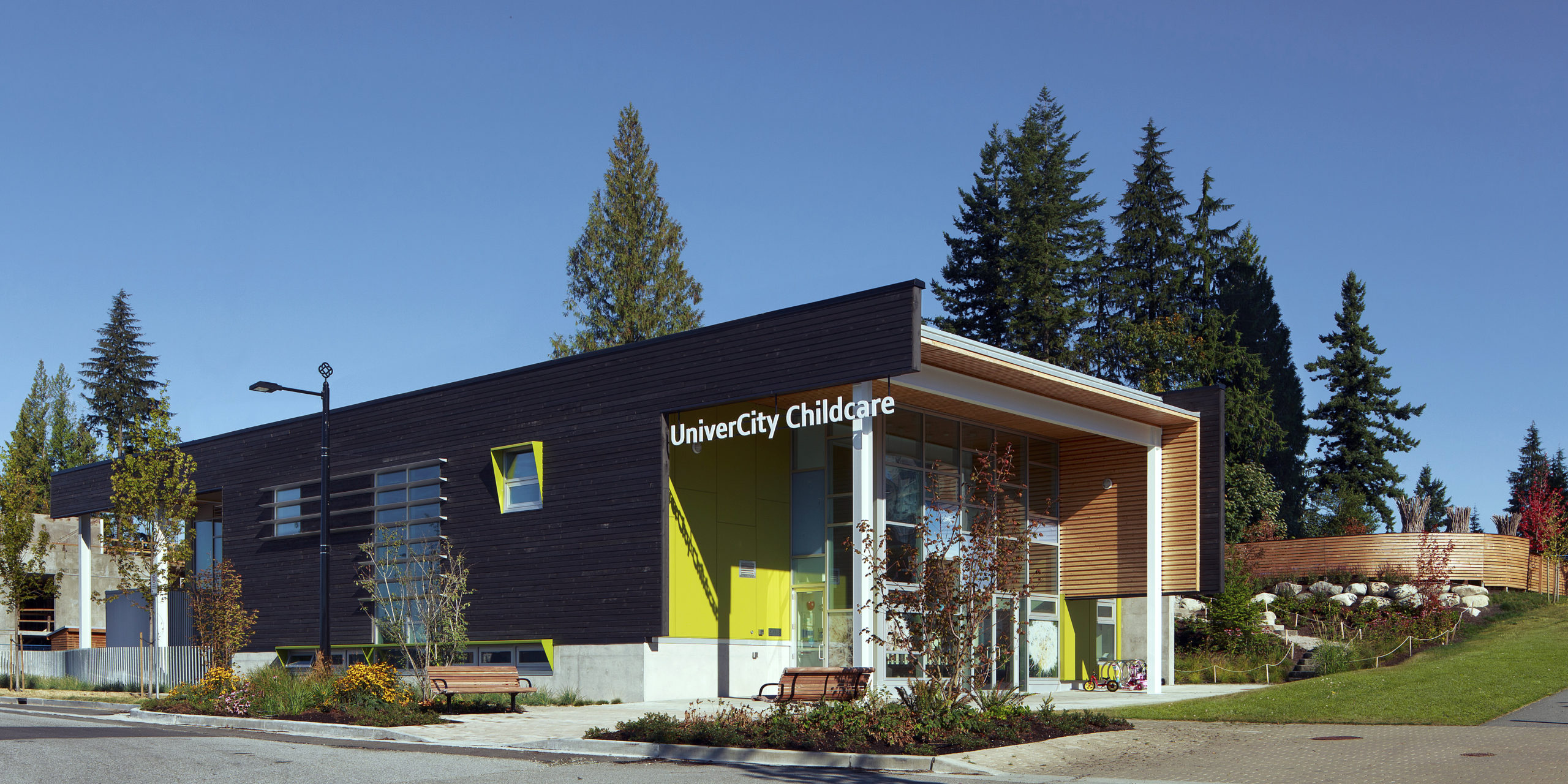
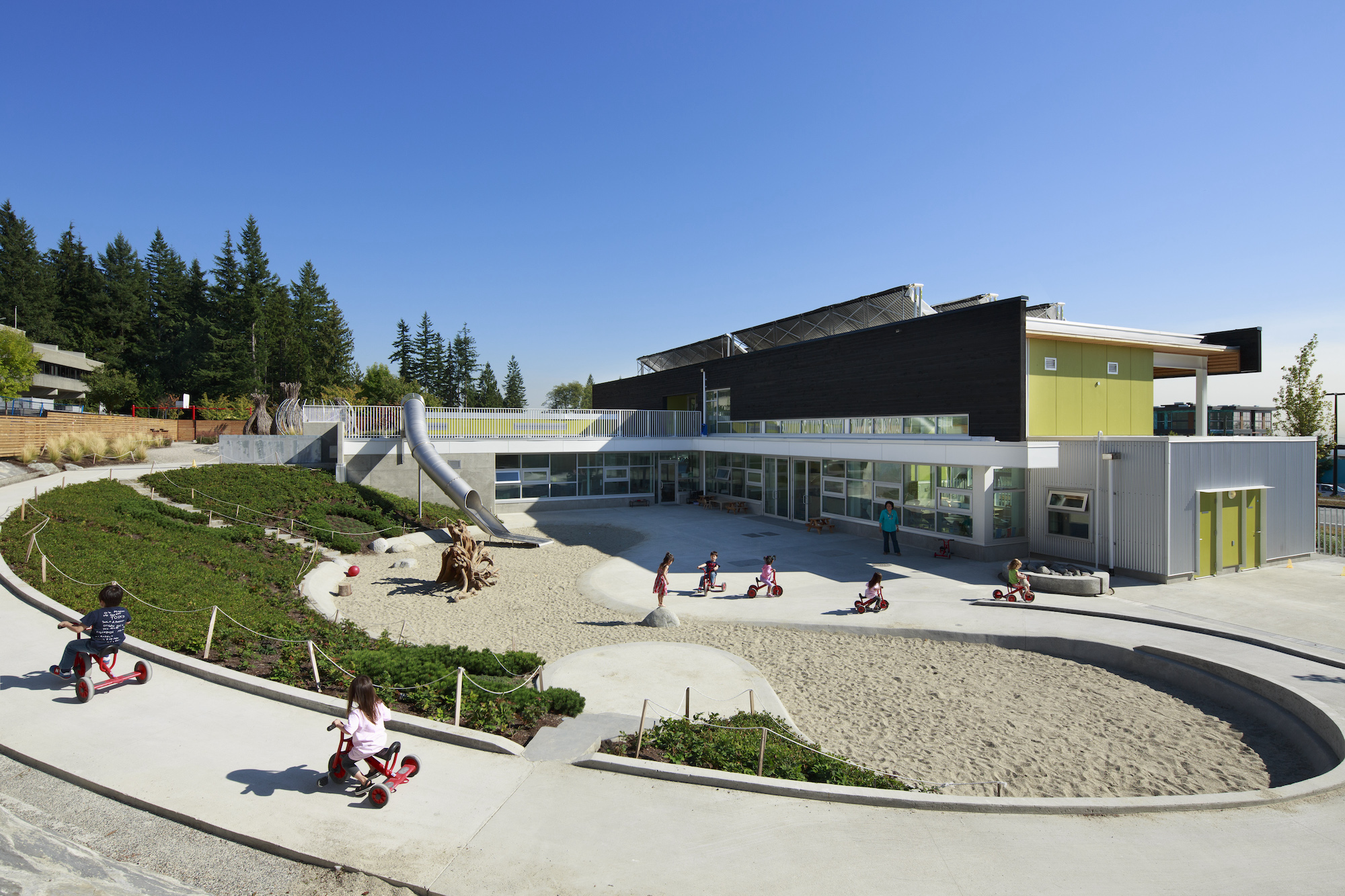
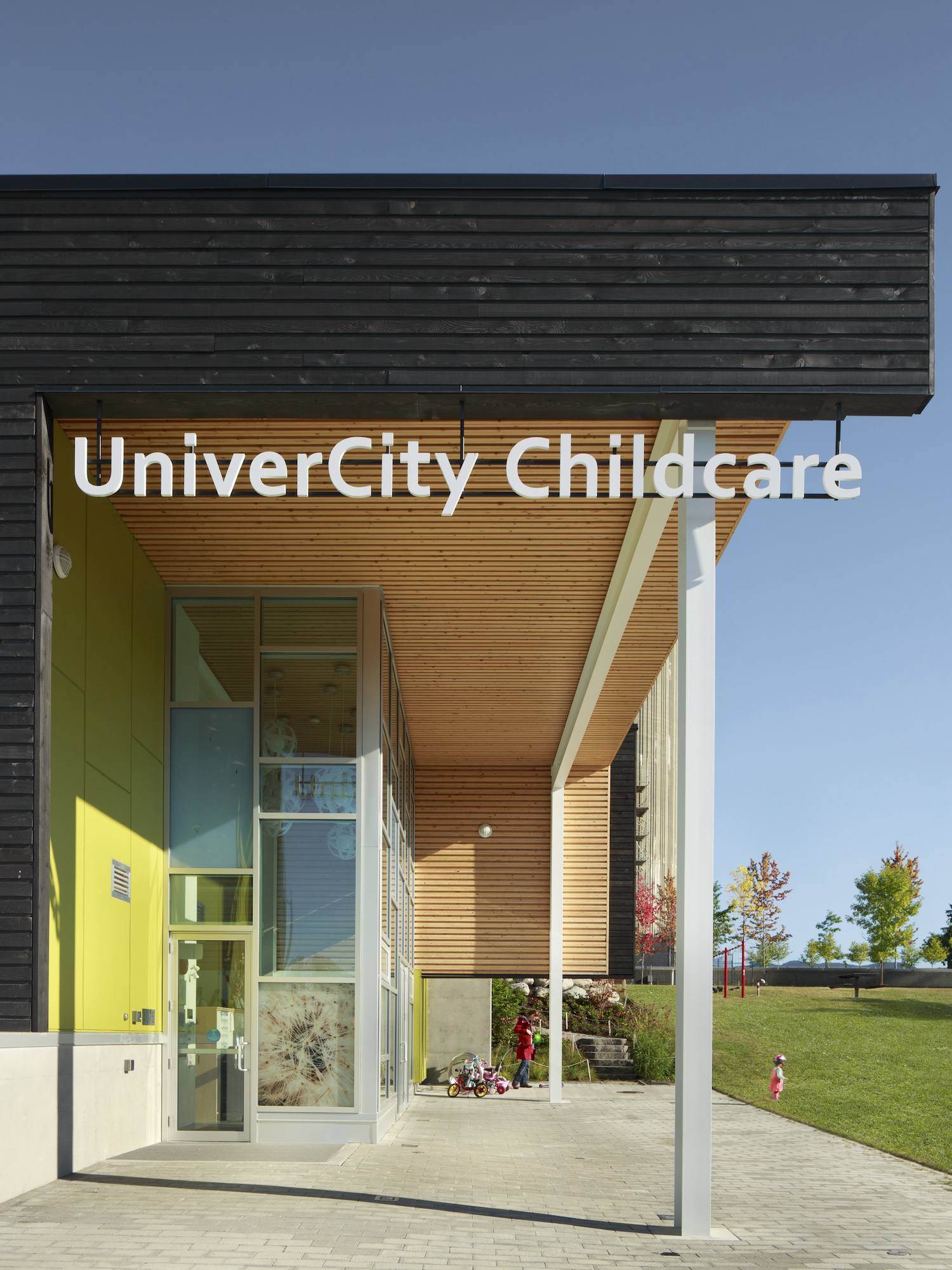
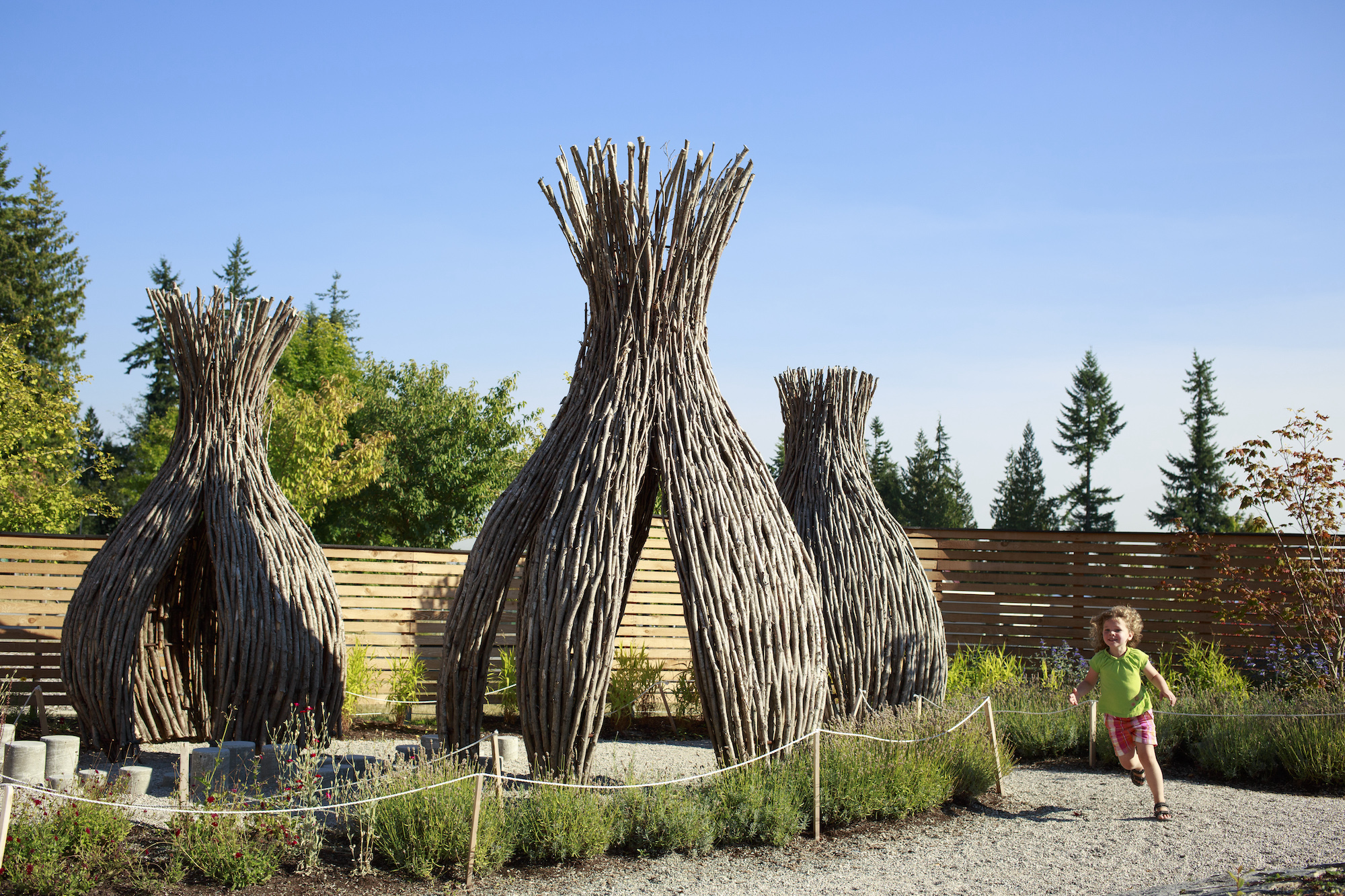
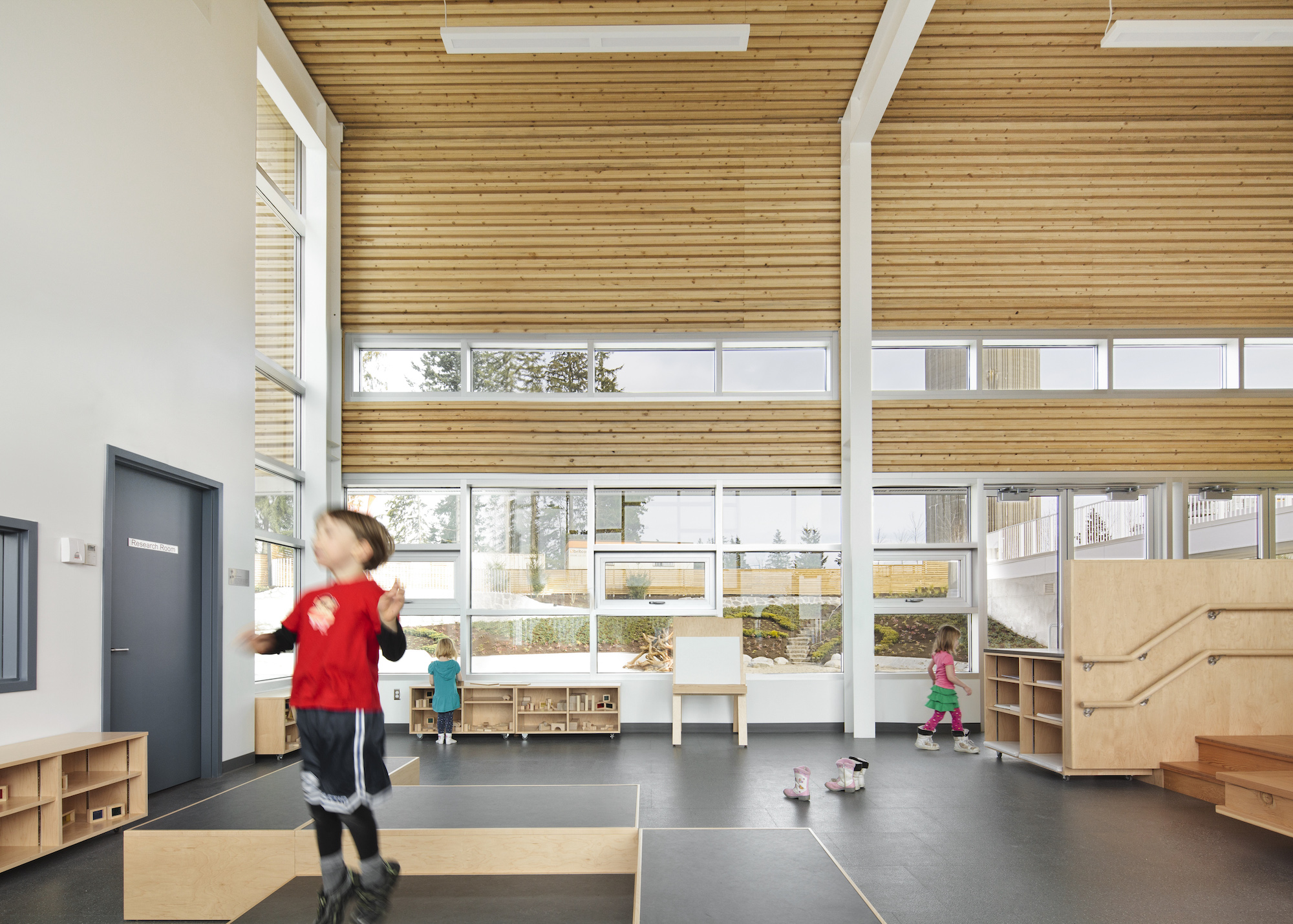
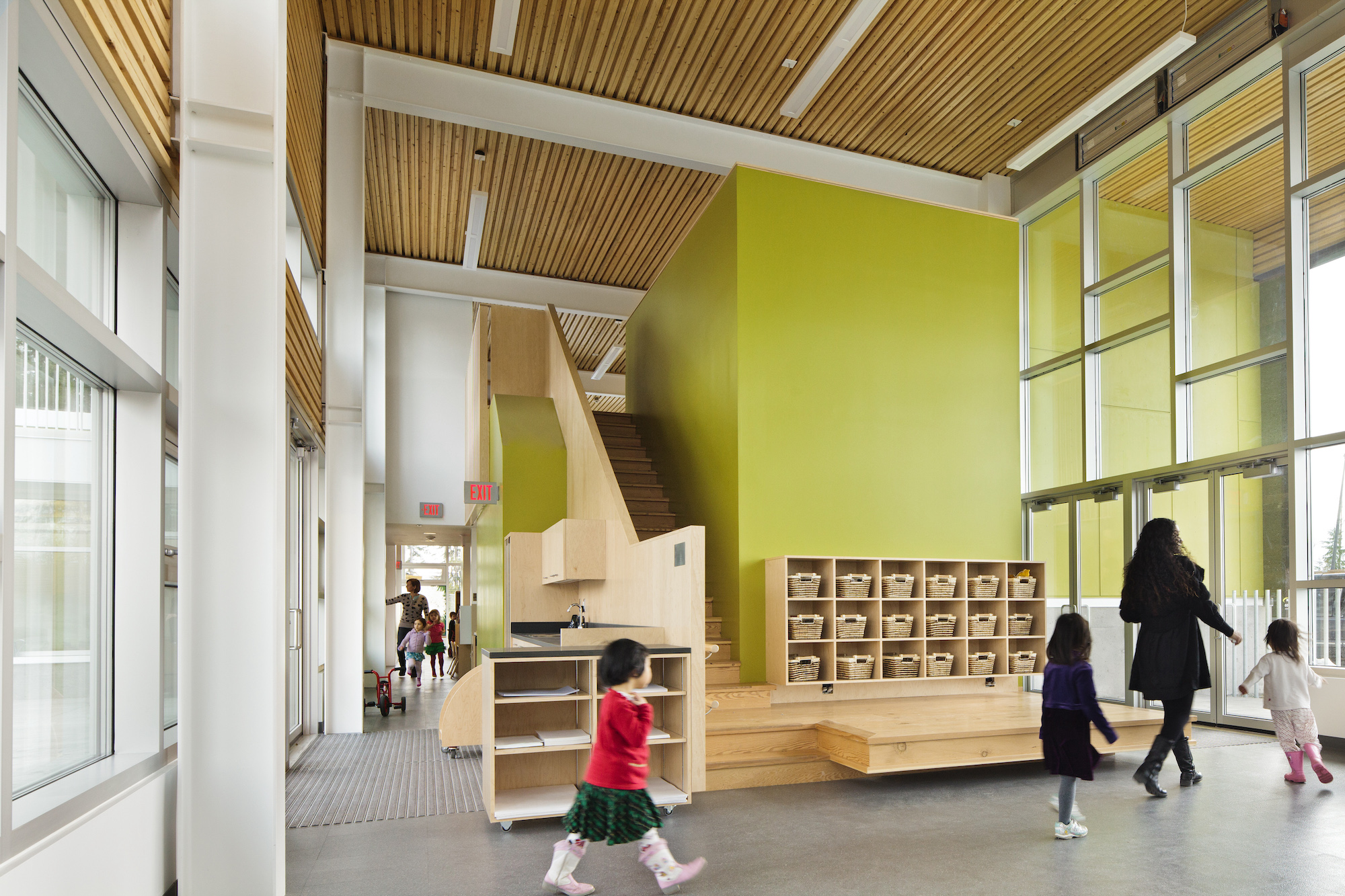
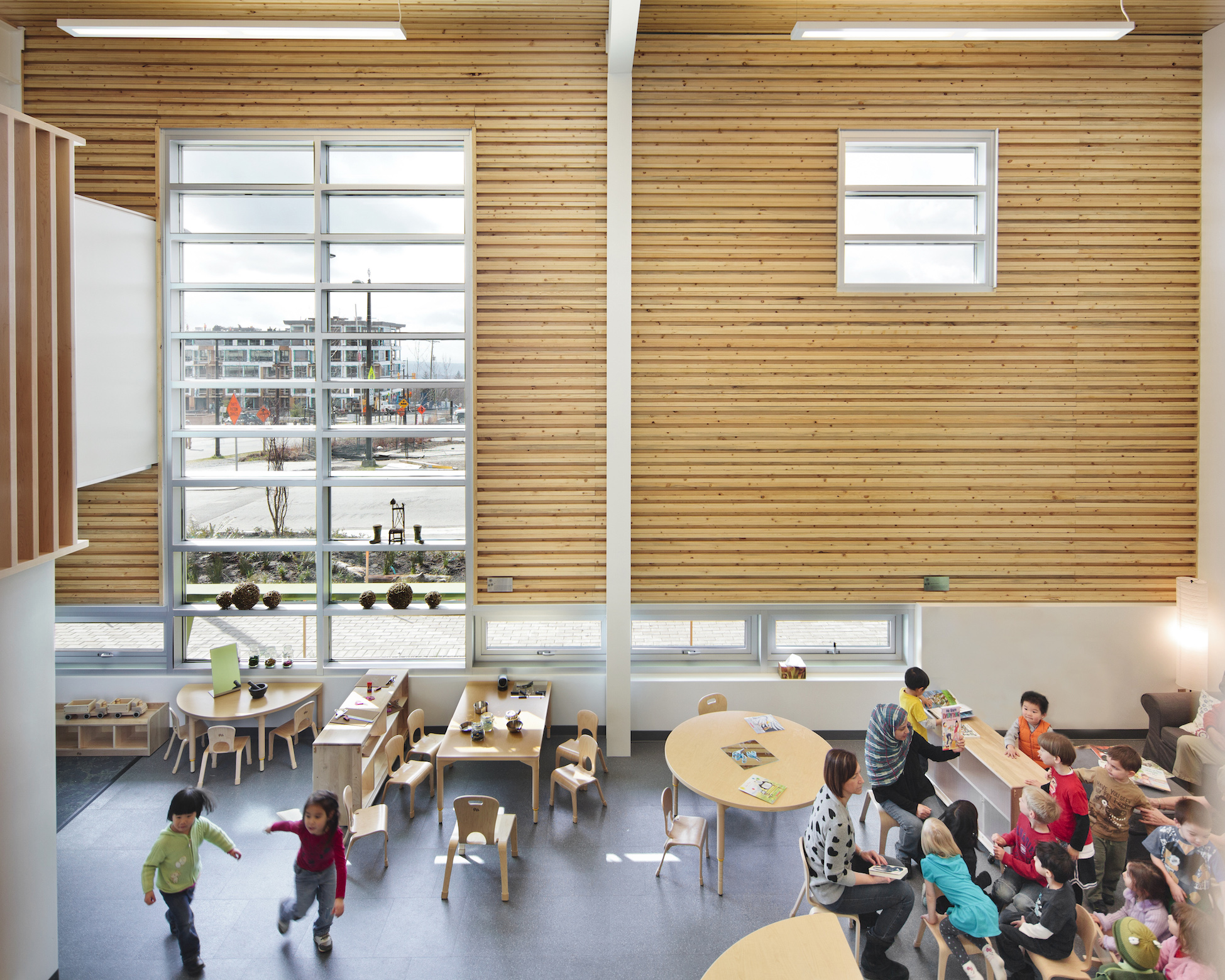
The SFU Community Trust produced a video (below) about the project which showcases children as the storytellers about the building’s sustainability.
Achievements
The project cost less than comparable projects as reported in Canadian Architect, quoting Dale Mikkelsen, Director of Development at SFU Community Trust. He said “The project is currently tracking against locally available price benchmarks for stand-alone childcare facilities at 10 to 15 percent below delivery cost of a turnkey LEED Sliver facility” (3).
In addition to Petal Certification with the LBC standard, the UniverCity Childcare project has won numerous sustainability awards including: CaGBC National Leadership Awards – Green Building Champion Award 2013, SAB Canadian Green Building Award 2012, and Urban Development Institute Award – Best Sustainable 2012.
Lessons learned
As part of the Living Building Challenge process, the project team reflected on challenges associated with meeting the high sustainability benchmarks. Some of the key lessons are reported on a case study by the International Living Future Institute (4), including:
- Finding and incorporating locally sourced materials in the project was time consuming and expensive, creating issues for the project schedule and budget.
- Coordinating with the subcontractors involved in the project was difficult, and it was reported that at points it was challenging to bring them into the sustainability vision.
- Sourcing materials was also time-consuming because some manufacturers did not have information about their final manufacturing and assembly processes. To go through the rigorous Living Building Challenge certification, the contractor researched 99% of the products.
More information
- MacDonald, M., 2015. Early Childhood Education and Sustainability: A Living Curriculum. Child. Educ. 91, 332–341. https://doi.org/10.1080/00094056.2015.1090845
- Pineo, H., 2020. Towards healthy urbanism: inclusive, equitable and sustainable (THRIVES) – an urban design and planning framework from theory to praxis. Cities Health 0, 1–19. https://doi.org/10.1080/23748834.2020.1769527
- Woolliams, J., 2011. Buildings That Give Back. Can. Archit. 56, 33–35.
- International Living Future Institute, 2016. UniverCity Childcare Centre. URL https://living-future.org/lbc/case-studies/univercity-childcare-centre/ (accessed 4.7.22).

